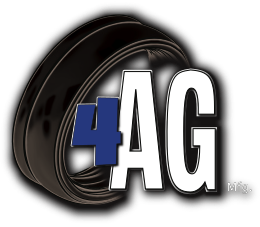Upgrading Planters for Perfect Cultivation of Crops
The rapid development of modern planters has provided operators with extensive control and monitoring options. Planter adjustments are no longer made by hand but rather with hydraulics, electricity, or air.
Farmers making changes must consider how those modifications will affect things like planting depth, spacing, and the population of the crops. Field adjustments occur frequently to get the planter operate in less-than-ideal soil moisture.
While we frequently concentrate on brand-new equipment and updated planters, success this spring will depend on our familiarity with the planter's fundamental purpose. The role of each component in determining seeding depth and spacing and their maintenance will become easier with the basic idea. Read on to learn a clarification-inducing piece about closing wheels for planters.
The Basics of Planters for Better Seed Yielding
Knowing about Trash Whippers
The most challenging obstacle is the ever-changing soil and moisture conditions that one must endure before planting begins. Trash whippers serve an essential purpose and allow for a uniform seedbed for cultivation. Their primary function is to shift residue, not to till a strip or create a furrow. Make sure your row cleaners of closing wheels for planters, whether fixed in place or adjustable by hand, aren't tilling a furrow. Floating row cleaners, which are adjustable using air or hydraulic pressure, are another viable option. Those interested in trying out no-till planting will find this an excellent upgrade.
How Is Depth Gauge Wheel Important?
Many newer designs of depth gauge wheels make it possible to plant in wet environments where older models would have failed. The design is up to the individual farmer, but they all work to reduce row-unit bounce and keep the planting depth consistent. Make it a yearly ritual to take out the gauge wheels and inspect them for wear. You must immediately remove the gauge wheels if you get into a "sticky" situation while planting.
The "correct" closing wheel for planters, like the "perfect" depth gauge wheel, is a matter of farmer preference that can be influenced by factors such as previous experience or soil type. Remember that the closing wheel's function is not to slander the planting slot shut. The goal is to prevent the soil from becoming too compacted and eliminate air pockets around the seed. Farmers have encountered countless possibilities and configurations. Both wheels on a standard planter are rubber and are helpful in wet or dry conditions.
What are Spiked Closing Wheels?
Spiked closing wheels are the other typical variety. When using spiked wheels, farmers must be mindful of creating air pockets that may reduce seed-to-soil contact. One rubber wheel and one spiked wheel are standard preventive measures. Make an informed decision based on your prior knowledge and preferences.
The down pressure on the depth gauge wheels and the planter closing wheels is the final factor to consider. As soil and moisture conditions change while moving across the field and from one area to the next, it is essential to adjust the down pressure settings accordingly and to check on them frequently.
Which Planter Do You Need?
If you want your seeds to be in perfect condition throughout the winter and the upcoming spring, finalize the appropriate closing wheels for planters that you need. Once you have made up your mind, contact us at 4AG Manufacturing. We have upgraded all the latest equipment to provide you with every tool you need for cultivation.

